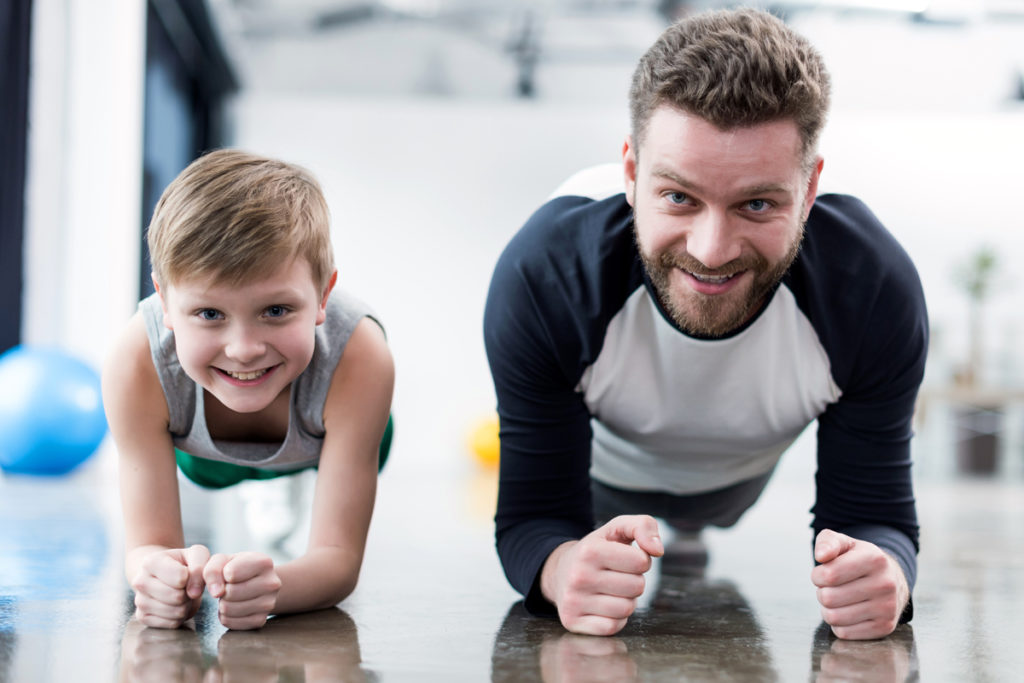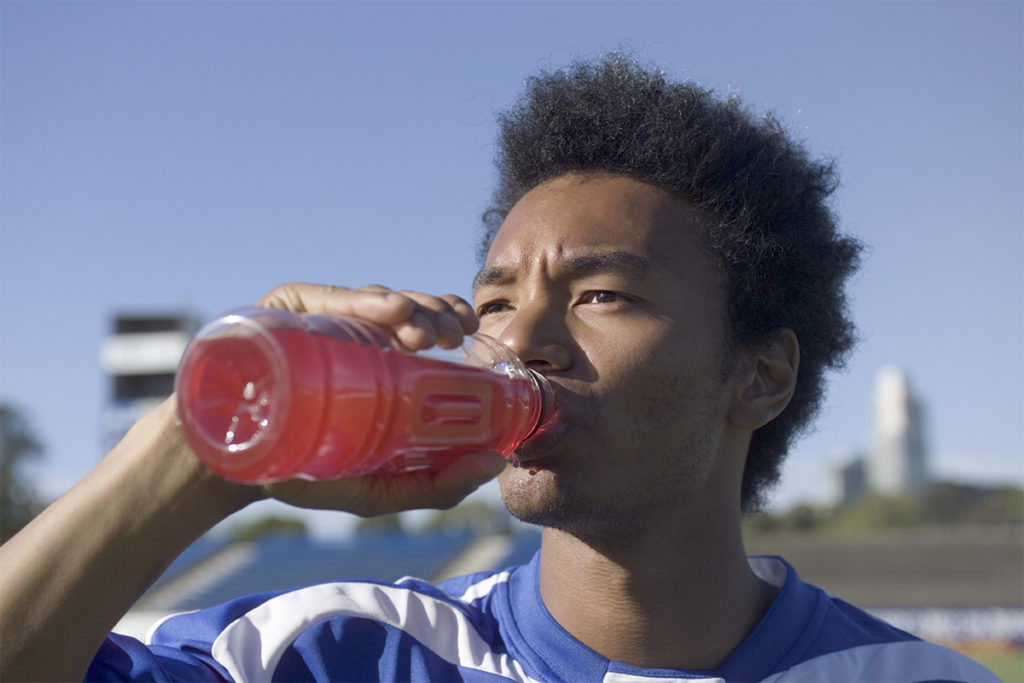Implementing Kids’ Fitness in Your Studio
A Smart, Safe, Community-Building Strategy

Today’s children face a critical health crossroads. On one hand, decades of research confirm that regular physical activity builds stronger hearts, bones, and muscles while also supporting mental health, academic performance, and resilience. On the other, inactivity and obesity rates continue to climb. In the United States, only about one in four youth meet the CDC’s daily activity guidelines of at least 60 minutes of moderate-to-vigorous exercise, and childhood obesity has risen from 13.9% in 1999–2000 to over 21% in 2021–2023 with severe obesity nearly doubling in that span (CDC, 2023; CDC, 2024a; CDC, 2024b).
The good news? Well-designed, supervised programs; whether in studios, schools, or community centers, can help reverse these trends. By giving kids safe spaces to move, play, and build skills, fitness professionals not only improve health outcomes but also provide parents with trusted support and strengthen community connections (Moore et al., 2018; Love et al., 2021).
Bottom line: investing in youth fitness is more than a business opportunity. It’s a chance to build healthier trajectories for children while positioning your program as a vital community hub.
Program blueprint
Define your audience and goals
The first step in implementing a kids’ fitness program is determining exactly who you will serve and what you aim to accomplish. Age is an important variable because developmental needs differ significantly across childhood and adolescence. For example, children aged 3–5 benefit most from playful, unstructured movement that builds foundational motor skills, while children aged 6–8 are ready for more guided skill exploration. Older groups, such as ages 9–12, can handle skill progression, light resistance training, and structured games. Teenagers aged 13–17 can begin developing training literacy and exploring sport-specific performance, provided they have proper supervision and progressive loading.
Setting clear, measurable outcomes ensures your program remains focused and impactful. Consider metrics such as the average minutes of MVPA per session, weekly attendance rates, improvement in motor skills, reported enjoyment levels, and the number of family or community engagement opportunities offered. Aligning these goals with the CDC’s physical activity guidelines (CDC, 2024a; CDC, 2023) ensures your program meets nationally recognized health standards. This alignment also provides a clear, evidence-based framework to share with parents, pediatricians, and community partners, reinforcing your program’s credibility.
Finally, communicate your goals internally to staff and externally to parents. A shared understanding of the program’s purpose helps everyone stay committed to consistent delivery. For example, if one of your primary goals is to enhance community involvement, design activities that integrate local schools or community organizations into your sessions. Involving parents and the wider community not only increases buy-in but also improves long-term participation.
- Age bands: 3–5 (play-based fundamentals), 6–8 (skill exploration), 9–12 (skill progression), 13–17 (training literacy and performance).
- Core outcomes: minutes of MVPA per session, weekly attendance, motor skills progression, enjoyment, family engagement, and community partnerships. Align with CDC youth activity guidelines (CDC, 2024a; CDC, 2023).
Offer formats that embed movement “opportunities”
To maximize children’s physical activity, program formats must be intentionally designed to minimize sedentary time. Research indicates that children’s MVPA increases substantially when games are adapted to keep all participants moving (Moore et al., 2018). This can be achieved by avoiding long lines, minimizing waiting for turns, and modifying traditional games so more children are active at the same time. For example, instead of traditional tag where only one or two children are “it,” consider multiple taggers or activity stations that keep everyone engaged.
Offering a variety of activity stations can help target different movement skills and energy systems. Agility ladders improve coordination and quickness, scooter boards develop core stability, and medicine ball throws build strength and power. When introducing resistance training for youth, keep loads light, prioritize proper form, and provide close supervision. The American Academy of Pediatrics confirms that youth resistance training is both safe and beneficial when structured appropriately (Stricker, Faigenbaum, & McCambridge/AAP, 2020). Incorporating bone-loading activities such as hops, skips, and jump rope 2–3 times a week supports bone density and skeletal health during critical growth years.
In addition to solo and small-group activities, including family-oriented sessions such as “Parent & Me” classes can enhance participation rates and improve program retention. According to Moss and Gu (2022), family and community-based strategies significantly increase physical activity levels in children. These sessions also give parents the opportunity to model healthy behavior, creating a powerful, long-term influence on their children’s lifestyle habits.
- Move-more games: tag variations, relay circuits, “everybody plays” rules, minimal lines or turn-taking.
- Skill stations: agility ladders, jump and land mechanics, toss and catch, scooter boards, mini-obstacle courses.
- Youth resistance training (YRT): bodyweight basics (squat, hinge, push, pull, carry), medicine balls, bands, light kettlebells with an emphasis on technique, dosage, and supervision. AAP confirms YRT is safe and beneficial when coached properly (Stricker, Faigenbaum, & McCambridge/AAP, 2020).
- Bone-loading fun: hops, skips, jump rope (2–3 days/week).
- Mind-body & mobility: yoga, dynamic flexibility, breathing.
- Family add-ons: “Parent & Me” circuits and weekend family play hours. These leverage family and community-based strategies that improve PA participation (Moss & Gu, 2022).

Build safe, developmentally appropriate sessions
Safety and developmental appropriateness are cornerstones of any kids’ fitness program. Younger children require shorter bursts of varied activity, while older children can handle more structured skill practice. Regardless of age, sessions should remain fun and engaging. For ages 6–12, a ratio of one coach for every 8–10 participants ensures adequate supervision, while for ages 3–5, a smaller ratio of 1:6–8 is preferable for closer guidance.
A 60-minute session might begin with a playful warm-up to activate muscles and prepare joints, followed by a skill block targeting specific movements such as squats or push-ups. Next, an MVPA-focused game or circuit keeps heart rates elevated for 20 minutes, and a brief “Strong & Steady” finisher reinforces key strength movements. The session ends with a cooldown that includes stretching, breathing exercises, and positive feedback. This structure not only meets the recommended activity levels but also instills a habit of varied, balanced exercise.
Progression is another essential element. Following the sequence of improving movement quality first, then gradually increasing volume, introducing new variations, and finally adding external load ensures participants build skills safely (AAP, 2020). This approach reduces the risk of injury while promoting steady development, which keeps children motivated and confident in their abilities.
- Duration & frequency: 45–60 minutes, 2–3 times/week per cohort, aligning with the 60-minute daily MVPA target across settings (CDC, 2024a).
- Structure (60 min example):
- Welcome and playful warm-up (10)
- Skill block (15)
- Game or circuit for sustained MVPA (20)
- “Strong & steady” finisher (5)
- Cooldown and check-out (10)
- Staffing: 1:8–10 for ages 6–12; 1:6–8 for ages 3–5.
- Progression: movement quality, then volume, then variety, and finally external load (AAP, 2020).
- Inclusion: visual cues, predictable routines, choice-based stations, and sensory-friendly options to support diverse needs.
Safety & risk management (AAP-aligned)
Before children participate, studios should conduct a basic health questionnaire and injury screening. For those with chronic conditions or recent injuries, medical clearance should be required. This process not only ensures safety but also builds trust with parents and guardians. Once in the program, children must be supervised at all times. Coaches should enforce strict rules for safe equipment use and spotting procedures, particularly during resistance training.
Technique must always take priority over load. Teaching proper landing mechanics, core bracing, and hip hinging before adding weight is critical. Youth-sized equipment, soft flooring, and organized storage prevent unnecessary accidents. Coaches should be trained to recognize signs of fatigue or discomfort, adjusting the session as needed to maintain safety.
Following AAP guidelines, resistance training for youth should involve 1–3 sets of 6–15 controlled repetitions for multi-joint exercises, performed 2–3 nonconsecutive days per week. Sets should be stopped at the first sign of technical breakdown, ensuring children maintain form and avoid injury. This level of attention to detail reassures parents and positions your studio as a responsible, youth-focused facility.
- Pre-participation: brief health questionnaire and injury screening; medical clearance for special conditions.
- Supervision: hands-on coaching, strict rules for equipment use and spotting, no maximal lifts for novices.
- Technique first: teach landing mechanics, bracing, and hinge or squat patterns before adding load.
- Equipment: youth-sized implements, soft surfaces, secure storage to prevent unsupervised access.
- Progression parameters: 1–3 sets of 6–15 controlled reps for multi-joint patterns, 2–3 nonconsecutive YRT days/week, stop sets at first technical breakdown (AAP, 2020; Faigenbaum & Myer, 2010/2010s syntheses).

After-school alignment to boost MVPA
After-school hours are a key opportunity to increase daily activity levels, particularly for school-aged children who may spend most of the day sitting. Studies show that after-school programs that emphasize active time and adapt games to encourage movement lead to significant gains in MVPA (Beets et al., 2016; Moore et al., 2018). By scheduling kids’ classes between 3–6 pm, you can capture this window when children are most available and in need of structured activity.
Partnerships with schools can further increase participation. For example, offering a school pick-up service or working with after-care programs can streamline access to your studio. Once there, ensure each child gets at least 30 minutes of moderate-to-vigorous activity per visit. Designing games to reduce idle time and ensuring a balance of aerobic and strength-building activities helps meet daily physical activity goals.
In addition to physical benefits, after-school programs provide a safe, supervised space for children while parents are still at work. This dual benefit, meeting the child’s health needs and the parent’s logistical needs, can make your program an invaluable resource for families.
Studio playbook:
- Schedule classes 3–6 pm.
- Provide school pick-up or partner with schools or after-care.
- Guarantee an “MVPA floor” (for example, 30 active minutes per visit) and design games to minimize waiting.
Community partnerships that drive participation
Building strong community ties can significantly boost program enrollment and long-term sustainability. Collaborating with schools, PT/OT clinics, and pediatricians can help create referral pipelines. For example, offering movement-literacy screenings during school health fairs not only promotes your services but also addresses a community need. Sharing your program’s safety protocols and progress tracking with pediatricians builds credibility and trust.
Local organizations such as YMCAs, parks and recreation departments, and faith-based groups can also be valuable partners. Co-hosting family activity nights or offering discounted access for community members can increase your program’s visibility and accessibility. Research by Love et al. (2021) shows that community-scaled initiatives can have measurable impacts on physical activity at the population level when tailored to local needs.
Partnerships are not only about promotion but also about creating a sense of shared mission. When families see your studio working alongside other respected community institutions, they are more likely to view your program as a trustworthy and integral part of the neighborhood.
- Schools & PT/OT clinics: referral networks, movement-literacy screenings, educator nights.
- Pediatricians: AAP endorses supervised resistance or strength as part of youth fitness. Share your safety protocols and progressions (AAP, 2020).
- Local Y, parks and recreation, or faith organizations: co-host family activity nights and low-cost access days. Scaled community initiatives can raise PA at population level when adapted to local context (Love et al., 2021).
Measure what matters
Tracking outcomes is essential for continuous improvement and demonstrating value to parents and partners. Activity can be monitored through simple methods such as timing active minutes during sessions or using heart rate monitors for older children. For research-level precision, accelerometers can be used periodically to measure MVPA.
In addition to quantitative measures, qualitative feedback is equally important. Gathering children’s enjoyment ratings, parents’ satisfaction surveys, and coach observations helps identify strengths and areas for improvement. Skill checklists can document progress in movement quality, while periodic assessments can track fitness improvements without focusing on weight.
When monitoring health trends, such as BMI-for-age percentiles, it is crucial to maintain confidentiality and use weight-neutral language. The goal should be to celebrate improvements in movement, strength, and endurance rather than focusing solely on body size. This approach fosters a positive, motivating environment where all children can thrive.
- Session MVPA proxy: active time vs. total time (coach-timed), heart-rate targets for teens, or periodic accelerometry in pilots (research standard).
- Attendance & retention and RPE/fun scores (smiley scale for kids).
- Skill checklists (jump-land cues, squat depth/control) and short fitness or ability markers, ensuring non-stigmatizing framing.
- Health trends: For long-term programs, monitor BMI-for-age percentiles confidentially and in partnership with parents or clinicians when appropriate (CDC definitions and growth charts). Use weight-neutral language and focus on behaviors.

Parent value & operations
Parents value programs that offer both quality instruction for their children and convenience for themselves. Scheduling youth classes alongside adult fitness options allows parents to work out while their children are active. Alternatively, providing a comfortable lounge or workspace can give parents a productive hour while they wait.
Clear operational policies are essential for smooth program delivery. This includes background checks for staff, a communication channel for parents, guidelines for behavior and inclusion, and protocols for handling illness or injury. Maintaining incident logs and regular staff training ensures that your program runs safely and efficiently.
Pricing should be structured to encourage consistent attendance while remaining accessible. Options like punch cards, monthly memberships, family bundles, and scholarship opportunities can accommodate different budgets. Partnering with local businesses or community organizations to sponsor scholarships can further broaden access and reinforce your studio’s community role.
- Reliable schedule + supervised care: give caregivers a concurrent adult class or workspace. Your studio becomes a “healthy third place.”
- Policies: background checks, parent communication channel, behavior and inclusion policy, illness or injury protocol, incident logs.
- Pricing: punch cards and memberships, family bundles, scholarships sponsored by community partners.
Key takeaways for studio owners
- Anchor programs to the 60-minutes-daily youth guideline.
- Use game design and station flows to keep everyone moving.
- Implement AAP-aligned resistance training with qualified supervision.
- Program the after-school window and partner locally to widen access.
- Measure activity, skills, and enjoyment, not just attendance.
Implementing a thoughtfully designed kids’ fitness program in your studio is more than a business decision, it is an investment in the health and vitality of your community. By creating an environment where children can move, learn, and grow safely, you not only help combat childhood inactivity and obesity but also strengthen family connections and community engagement. With evidence-based structure, committed coaching, and strong partnerships, your studio can become a trusted resource for lifelong health, empowering the next generation to embrace active, confident, and healthy living.
Optional background (further reading):
Centers for Disease Control and Prevention. (2024). Guidelines and recommended strategies to increase physical activity among youth. https://www.cdc.gov/physical-activity/php/guidelines-recommendations/index.html
References
American Academy of Pediatrics Council on Sports Medicine and Fitness. (2020). Resistance training for children and adolescents (Clinical Report No. e20201011). Pediatrics, 145(6). https://doi.org/10.1542/peds.2020-1011 (Reaffirmed Nov 2024).
Beets, M. W., Weaver, R. G., Beighle, A., Webster, C., and Pate, R. R. (2016). Effectiveness of after-school interventions at increasing moderate-to-vigorous physical activity in children, A systematic review and meta-analysis. British Journal of Sports Medicine, 50(21), 1315–1324. https://doi.org/10.1136/bjsports-2016-096960
Centers for Disease Control and Prevention. (2023). Child activity, An overview. https://www.cdc.gov/physical-activity-basics/guidelines/children.html
Centers for Disease Control and Prevention. (2024a, July 3). Physical activity guidelines for school-aged children and adolescents. https://www.cdc.gov/physical-activity-education/guidelines/index.html
Centers for Disease Control and Prevention. (2024b). QuickStats, Prevalence of obesity and severe obesity among persons aged 2–19 years, United States, 1999–2000 to 2021–2023. MMWR, 73(41). https://www.cdc.gov/mmwr/volumes/73/wr/mm7341a5.htm
Love, R., Adams, J., and van Sluijs, E. M. F. (2021). How effective are physical activity interventions when they are scaled up? A systematic review. International Journal of Behavioral Nutrition and Physical Activity, 18, 16. https://doi.org/10.1186/s12966-021-01080-4
Moore, J. B., Beets, M. W., Webster, C. A., Khan, M., Beighle, A., et al. (2018). Statewide dissemination and implementation of physical activity standards in YMCA afterschool programs, Two-year outcomes. BMC Public Health, 18, 819. https://doi.org/10.1186/s12889-018-5737-6
Moss, S., and Gu, X. (2022). Home and community-based interventions for physical activity and early child development, A systematic review of effective strategies. International Journal of Environmental Research and Public Health, 19(19), 11968. https://doi.org/10.3390/ijerph191911968





